-
 Bitcoin
Bitcoin $94,977.5839
0.25% -
 Ethereum
Ethereum $1,808.5000
-0.48% -
 Tether USDt
Tether USDt $1.0003
-0.02% -
 XRP
XRP $2.2506
-1.30% -
 BNB
BNB $604.3126
-0.93% -
 Solana
Solana $147.7957
-0.14% -
 USDC
USDC $1.0000
0.00% -
 Dogecoin
Dogecoin $0.1757
-2.18% -
 Cardano
Cardano $0.6996
-1.61% -
 TRON
TRON $0.2434
-1.63% -
 Sui
Sui $3.5932
1.35% -
 Chainlink
Chainlink $14.6405
-3.42% -
 Avalanche
Avalanche $21.7312
-1.96% -
 Stellar
Stellar $0.2798
-0.86% -
 UNUS SED LEO
UNUS SED LEO $9.0259
0.31% -
 Toncoin
Toncoin $3.2324
-1.30% -
 Hedera
Hedera $0.1875
-1.30% -
 Shiba Inu
Shiba Inu $0.0...01343
-2.47% -
 Bitcoin Cash
Bitcoin Cash $364.5955
-2.31% -
 Polkadot
Polkadot $4.1441
-4.08% -
 Litecoin
Litecoin $85.6139
-1.29% -
 Hyperliquid
Hyperliquid $18.4364
-1.36% -
 Dai
Dai $1.0000
-0.01% -
 Bitget Token
Bitget Token $4.3912
-0.86% -
 Monero
Monero $275.5743
1.90% -
 Ethena USDe
Ethena USDe $0.9995
-0.01% -
 Pi
Pi $0.5838
-3.42% -
 Pepe
Pepe $0.0...08919
-0.13% -
 Uniswap
Uniswap $5.3422
-2.47% -
 Aptos
Aptos $5.4131
-2.85%
What should I do after LTC breaks through the key price? Chase the rise or wait and see?
After LTC breaks a key price level, traders can chase the rise for quick gains or wait and see to avoid false breakouts, using technical analysis to guide their strategy.
Apr 30, 2025 at 10:57 am
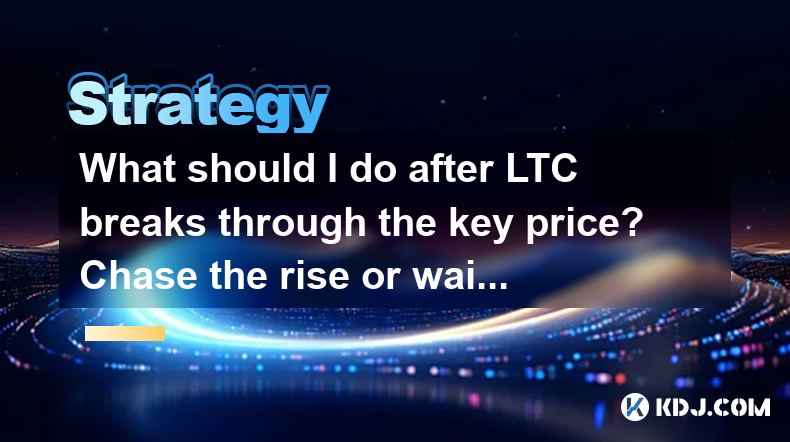
When LTC (Litecoin) breaks through a key price level, it can be a significant event for traders and investors. The decision to chase the rise or wait and see depends on various factors, including your trading strategy, risk tolerance, and the broader market context. In this article, we will explore the different approaches you can take after LTC breaks through a key price, providing detailed insights into each option.
Understanding Key Price Levels
Before deciding on a course of action, it's crucial to understand what a key price level means in the context of LTC. Key price levels are often identified as support and resistance levels, psychological price points, or levels that have historically triggered significant market movements. When LTC breaks through such a level, it can signal a potential shift in market sentiment.
To identify key price levels, traders often use technical analysis tools such as trend lines, moving averages, and chart patterns. For instance, if LTC breaks above a long-term resistance level, it might indicate a bullish trend. Conversely, breaking below a support level could signal bearish sentiment.
Chasing the Rise: Pros and Cons
Chasing the rise after LTC breaks through a key price level involves buying the cryptocurrency immediately after the breakout in hopes of capitalizing on the upward momentum. This approach can be lucrative but comes with its own set of risks.
Pros of Chasing the Rise:
- Potential for Quick Gains: If the breakout is genuine and the market continues to move in the same direction, you could see significant profits in a short period.
- Momentum Trading: Chasing the rise aligns with momentum trading strategies, which can be effective in trending markets.
Cons of Chasing the Rise:
- Risk of False Breakouts: Sometimes, LTC might break through a key level only to reverse back, leading to potential losses.
- Higher Entry Price: Buying after a breakout means entering at a higher price, which increases the risk if the price fails to sustain the upward move.
Waiting and Seeing: Pros and Cons
Alternatively, you might choose to wait and see how the market reacts after LTC breaks through a key price level. This approach involves monitoring the price action and other market indicators before making a decision.
Pros of Waiting and Seeing:
- Reduced Risk of False Breakouts: By waiting, you can confirm whether the breakout is genuine, reducing the risk of entering a trade that might reverse.
- Better Entry Points: Waiting can provide better entry points if the price pulls back after the initial breakout.
Cons of Waiting and Seeing:
- Missed Opportunities: If the price continues to rise without pulling back, you might miss out on potential gains.
- Delayed Action: Waiting too long can result in missing the optimal entry point, especially in fast-moving markets.
Technical Analysis Tools to Use
To make an informed decision after LTC breaks through a key price level, you can use various technical analysis tools. Here are some tools and how to use them:
Moving Averages:
- Simple Moving Average (SMA): Plot an SMA on your LTC chart to identify the overall trend. If the price breaks above the SMA, it might indicate a bullish trend.
- Exponential Moving Average (EMA): The EMA gives more weight to recent prices, making it more responsive to new price movements. Use it to confirm breakouts.
Volume:
- Volume Analysis: High volume during a breakout can confirm the strength of the move. If LTC breaks through a key level with high volume, it's more likely to be a genuine breakout.
Candlestick Patterns:
- Bullish Engulfing: A bullish engulfing pattern after a breakout can signal continued upward momentum.
- Bearish Engulfing: Conversely, a bearish engulfing pattern might indicate a potential reversal.
Risk Management Strategies
Regardless of whether you decide to chase the rise or wait and see, implementing effective risk management strategies is crucial. Here are some steps to manage your risk:
Set Stop-Loss Orders:
- Determine your risk tolerance and set a stop-loss order below the breakout level to limit potential losses.
Position Sizing:
- Calculate the appropriate position size based on your account balance and risk per trade. A common rule is to risk no more than 1-2% of your trading capital on a single trade.
Diversification:
- Avoid putting all your capital into LTC. Diversify your portfolio to spread risk across different assets.
Monitoring Market Sentiment
Market sentiment plays a significant role in the price movements of LTC. After a key price level breakout, it's essential to monitor sentiment indicators to gauge the market's direction.
Social Media and Forums:
- Platforms like Twitter, Reddit, and crypto-specific forums can provide insights into the sentiment around LTC. Look for discussions and sentiment shifts that might influence the price.
Crypto News:
- Stay updated with the latest news and developments related to LTC. Positive or negative news can significantly impact the price after a breakout.
Sentiment Analysis Tools:
- Use tools that analyze social media sentiment to get a quantitative measure of the market's mood. These tools can help you make more informed decisions.
Practical Steps to Take After a Breakout
If you decide to chase the rise or wait and see, here are practical steps to follow:
Chasing the Rise:
- Confirm the Breakout: Ensure the breakout is genuine by checking for high volume and other confirming indicators.
- Enter the Trade: Place a buy order at the current market price or slightly above the breakout level.
- Set a Stop-Loss: Place a stop-loss order below the breakout level to manage risk.
- Monitor the Trade: Keep an eye on the price action and be ready to adjust your stop-loss or take profits as the market moves.
Waiting and Seeing:
- Observe Price Action: Watch how LTC behaves after the breakout. Look for pullbacks or continued upward momentum.
- Identify Entry Points: If the price pulls back to a support level or a moving average, consider entering the trade at these points.
- Set a Stop-Loss: Once you enter the trade, set a stop-loss order to manage risk.
- Monitor the Trade: Continuously monitor the market and adjust your strategy based on new developments.
Frequently Asked Questions
Q: How can I identify a false breakout in LTC?
A: A false breakout in LTC can often be identified by low trading volume during the breakout, quick reversal back below the key level, and lack of confirmation from other technical indicators. If the price breaks through a level but fails to sustain the move and quickly reverses, it's likely a false breakout.
Q: What are some common psychological price levels for LTC?
A: Common psychological price levels for LTC include round numbers like $50, $100, $200, and $500. These levels often act as strong support or resistance because traders and investors tend to place orders at these psychologically significant points.
Q: How does market sentiment affect LTC price movements after a breakout?
A: Market sentiment can significantly influence LTC price movements after a breakout. Positive sentiment, driven by favorable news or social media buzz, can reinforce the breakout and lead to further price increases. Conversely, negative sentiment can cause the price to reverse back below the key level, resulting in a failed breakout.
Q: Can I use fundamental analysis to decide whether to chase the rise or wait and see after an LTC breakout?
A: While technical analysis is more commonly used for short-term trading decisions like chasing the rise or waiting and seeing, fundamental analysis can provide additional context. Factors such as Litecoin's adoption rate, network upgrades, and overall market conditions can influence your decision. However, for immediate post-breakout decisions, technical analysis is typically more relevant.
Disclaimer:info@kdj.com
The information provided is not trading advice. kdj.com does not assume any responsibility for any investments made based on the information provided in this article. Cryptocurrencies are highly volatile and it is highly recommended that you invest with caution after thorough research!
If you believe that the content used on this website infringes your copyright, please contact us immediately (info@kdj.com) and we will delete it promptly.
- FLOKI Appears to Be on the Verge of a Major Breakout as It Continues to Hold Firm Above a Key Support Level
- 2025-04-30 15:15:15
- After Adding 5,000 BTC to Its Balance Sheet, Metaplanet Enlists David Bailey to Join Advisory Board
- 2025-04-30 15:15:15
- XRP price manages to retake the $2.3 level
- 2025-04-30 15:10:13
- Token2049, one of the biggest events in the crypto market, will run on Wednesday and Thursday in Dubai.
- 2025-04-30 15:10:13
- Dogecoin (DOGE) Price Prediction: Will the Dog-Themed Meme Coin Breakout to $0.20 Soon?
- 2025-04-30 15:05:13
- Major Token Unlocks Are About to Happen
- 2025-04-30 15:05:13
Related knowledge
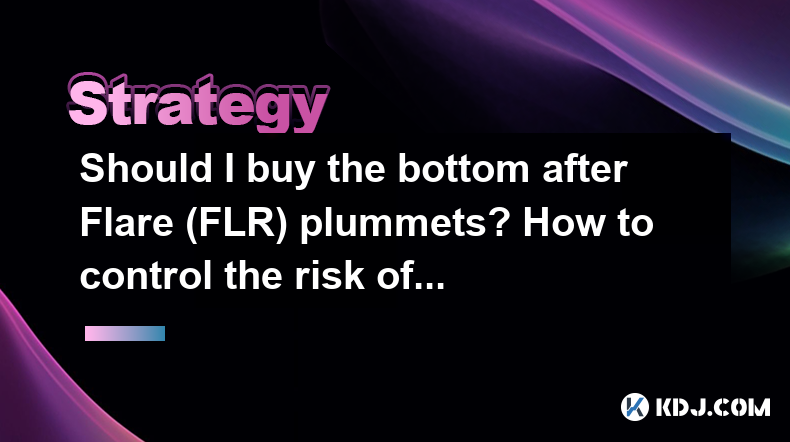
Should I buy the bottom after Flare (FLR) plummets? How to control the risk of margin calls?
Apr 30,2025 at 01:49pm
Should I buy the bottom after Flare (FLR) plummets? How to control the risk of margin calls? The cryptocurrency market is known for its volatility, and Flare (FLR) is no exception. When a cryptocurrency like FLR plummets, many investors are tempted to buy the bottom in hopes of capitalizing on a potential rebound. However, this strategy comes with signi...

How to set the stop loss point of Flare(FLR)? What are the tips to avoid excessive losses?
Apr 30,2025 at 02:21pm
Understanding the Importance of Stop Loss in Cryptocurrency TradingWhen trading cryptocurrencies like Flare (FLR), setting a stop loss is crucial for managing risk and protecting your investments. A stop loss is an order placed with a broker to buy or sell once the stock reaches a certain price. This tool helps traders limit their losses by automaticall...
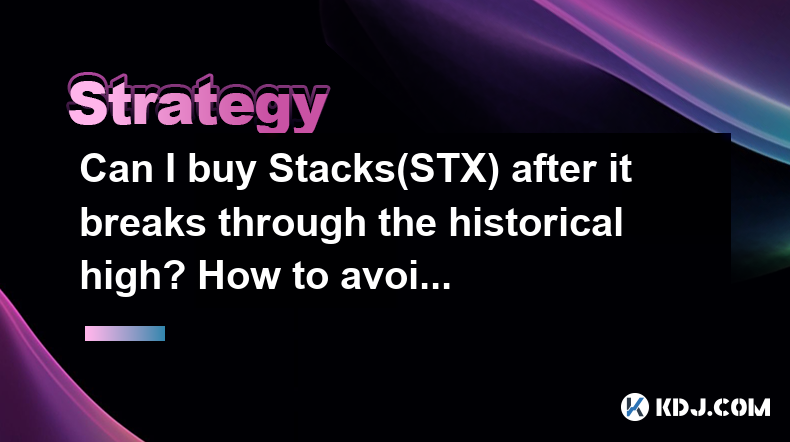
Can I buy Stacks(STX) after it breaks through the historical high? How to avoid taking over?
Apr 30,2025 at 02:28pm
Introduction to Stacks (STX)Stacks (STX) is a cryptocurrency that aims to enable smart contracts and decentralized applications on the Bitcoin blockchain. It uses a unique consensus mechanism called Proof of Transfer (PoX), which allows miners to mine STX while still contributing to the security of the Bitcoin network. Given its innovative approach, man...
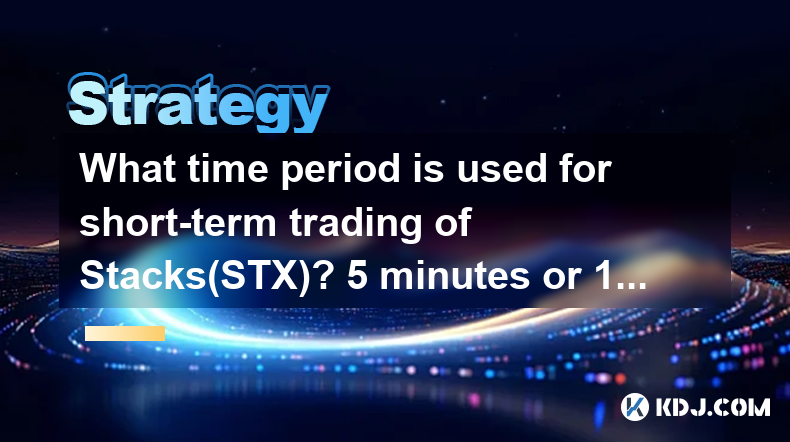
What time period is used for short-term trading of Stacks(STX)? 5 minutes or 1 hour line?
Apr 30,2025 at 01:07pm
What time period is used for short-term trading of Stacks(STX)? 5 minutes or 1 hour line? When it comes to short-term trading of Stacks (STX), one of the crucial decisions a trader must make is selecting the appropriate time frame for their trading activities. The choice between a 5-minute chart and a 1-hour chart significantly impacts the trading strat...
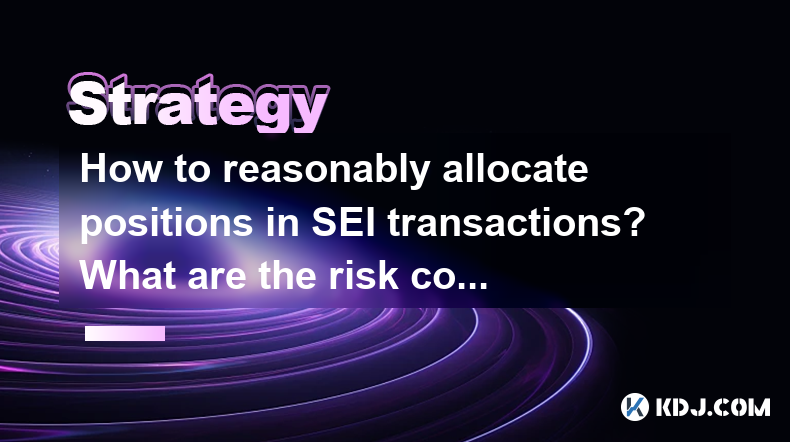
How to reasonably allocate positions in SEI transactions? What are the risk control principles?
Apr 30,2025 at 10:43am
In the world of cryptocurrency transactions, particularly when dealing with a specific token like SEI, it's crucial to approach position allocation and risk control with a strategic mindset. This article will delve into how to reasonably allocate positions in SEI transactions and outline the key principles of risk control that should guide your trading ...
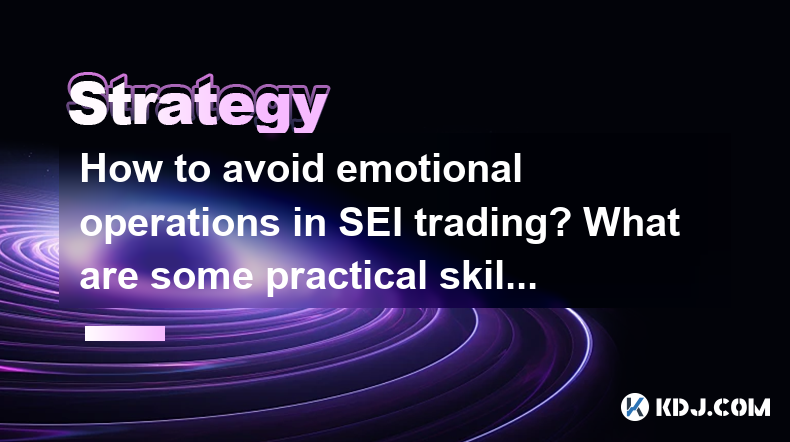
How to avoid emotional operations in SEI trading? What are some practical skills?
Apr 30,2025 at 12:28pm
Introduction to Emotional Operations in SEI TradingEmotional operations in the context of SEI trading refer to decisions driven by feelings rather than logic and analysis. These can lead to impulsive buying or selling, often resulting in financial losses. Understanding how to manage these emotions is crucial for any trader looking to succeed in the vola...

Should I buy the bottom after Flare (FLR) plummets? How to control the risk of margin calls?
Apr 30,2025 at 01:49pm
Should I buy the bottom after Flare (FLR) plummets? How to control the risk of margin calls? The cryptocurrency market is known for its volatility, and Flare (FLR) is no exception. When a cryptocurrency like FLR plummets, many investors are tempted to buy the bottom in hopes of capitalizing on a potential rebound. However, this strategy comes with signi...

How to set the stop loss point of Flare(FLR)? What are the tips to avoid excessive losses?
Apr 30,2025 at 02:21pm
Understanding the Importance of Stop Loss in Cryptocurrency TradingWhen trading cryptocurrencies like Flare (FLR), setting a stop loss is crucial for managing risk and protecting your investments. A stop loss is an order placed with a broker to buy or sell once the stock reaches a certain price. This tool helps traders limit their losses by automaticall...

Can I buy Stacks(STX) after it breaks through the historical high? How to avoid taking over?
Apr 30,2025 at 02:28pm
Introduction to Stacks (STX)Stacks (STX) is a cryptocurrency that aims to enable smart contracts and decentralized applications on the Bitcoin blockchain. It uses a unique consensus mechanism called Proof of Transfer (PoX), which allows miners to mine STX while still contributing to the security of the Bitcoin network. Given its innovative approach, man...

What time period is used for short-term trading of Stacks(STX)? 5 minutes or 1 hour line?
Apr 30,2025 at 01:07pm
What time period is used for short-term trading of Stacks(STX)? 5 minutes or 1 hour line? When it comes to short-term trading of Stacks (STX), one of the crucial decisions a trader must make is selecting the appropriate time frame for their trading activities. The choice between a 5-minute chart and a 1-hour chart significantly impacts the trading strat...

How to reasonably allocate positions in SEI transactions? What are the risk control principles?
Apr 30,2025 at 10:43am
In the world of cryptocurrency transactions, particularly when dealing with a specific token like SEI, it's crucial to approach position allocation and risk control with a strategic mindset. This article will delve into how to reasonably allocate positions in SEI transactions and outline the key principles of risk control that should guide your trading ...

How to avoid emotional operations in SEI trading? What are some practical skills?
Apr 30,2025 at 12:28pm
Introduction to Emotional Operations in SEI TradingEmotional operations in the context of SEI trading refer to decisions driven by feelings rather than logic and analysis. These can lead to impulsive buying or selling, often resulting in financial losses. Understanding how to manage these emotions is crucial for any trader looking to succeed in the vola...
See all articles






















![Bowsers Castle by: YraX 100% (1 coin) (Mobile) Geometry Dash [2.2] Bowsers Castle by: YraX 100% (1 coin) (Mobile) Geometry Dash [2.2]](/uploads/2025/04/30/cryptocurrencies-news/videos/bowsers-castle-yrax-coin-mobile-geometry-dash/image-1.webp)































































